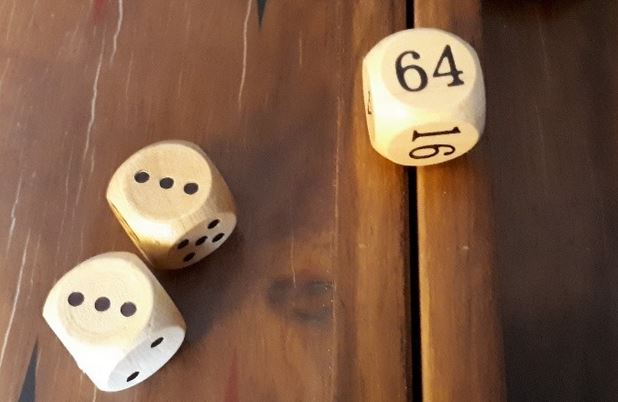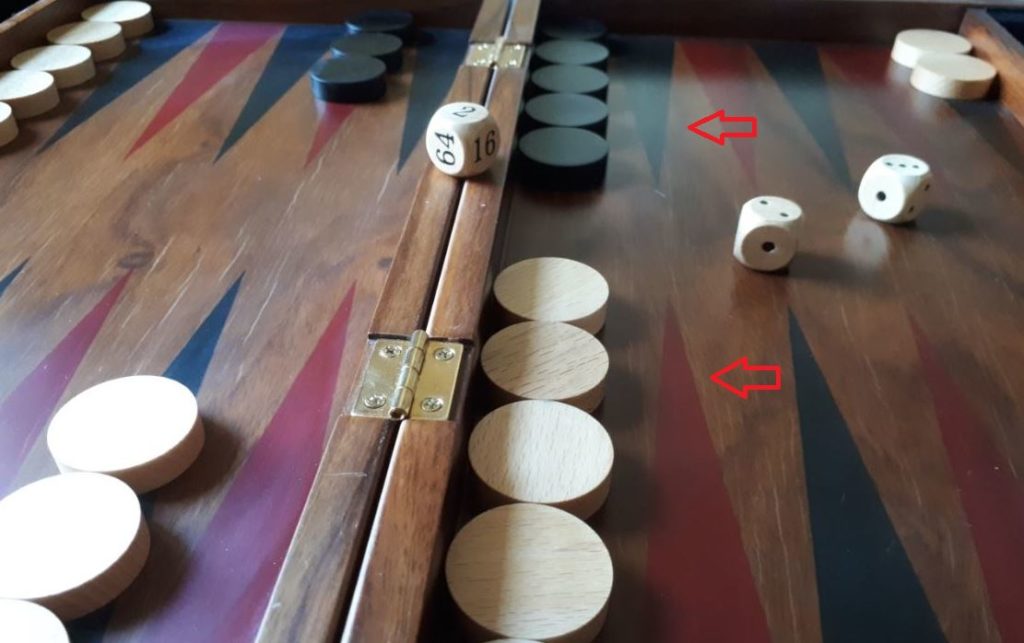Last updated on April 23, 2024
This Deluxe Backgammon post is for intermediate players who are looking to take their game to the next level. Ideally, you will have covered all of the material in our backgammon Beginner’s guides before reading this post. These advanced backgammon strategies will help you improve your options during a game.
Adapt
The positions in a game of backgammon are changing every move, as does the pip count. A strategy that was applicable at the start of the game might no longer be applicable during the later stages. Being able to adapt to a changing game in the heat of the moment is key to winning consistently in backgammon. A priming game might be your preferred strategy, but the match score might suggest another type of game, or the dice might force you to take a particular course of action.
Remember an opening play does not tie you to a specific strategy. The ideal strategy in a game may change depending on subsequent rolls of the dice. It is best to consider different strategies and expand your repertoire beyond a simple running game. Taking the time to re-evaluate your strategy on every move can pay dividends in the long term.
Always consider the options
A common mistake, even amongst good players, is rushing into what looks like the obvious move. You should never make a move until you have identified at least one or two viable alternatives. The worst playing mistakes are not made by choosing the second or third-best option, but rather by not even seeing the best move. A useful process to avoid this type of mistake is to consider every checker for every roll, even when the move looks obvious.
Combining strategies
There are five main strategies in backgammon. Knowing each of these strategies and how to combine them as a part of your overall game plan is important to improving your standard of play. For example, priming is a great strategy to pair with a blitz game plan. The all-out attack of the blitz is strengthened if you can combine a priming strategy to close out your home board. In contrast, if your opponent is off to a strong start, you might opt to combine a back-game strategy followed by a blitz to recover. Ultimately, you need to understand all of your strategic options and how to blend them into a combined winning strategy. Slotting is also a useful strategy to combine with priming.
Doubling
Don’t be afraid to double aggressively. Players tend to double conservatively a lot more often than is truly necessary. An aggressive doubling strategy can often unsettle an opposing player forcing them to make a mistake and concede the game. Many games that are lost, could easily have been won by a more aggressive doubling decision. Often, that lost game is due to a timid approach when doubling.
Hit
The general rule of thumb in backgammon is to take every opportunity you can to hit your opponent’s checkers. At its heart, backgammon is a racing game. When you hit an opponent’s checker you send that piece back to the beginning of the race. This creates a huge advantage, particularly if you hit a checker in your opponent’s home board. Imagine that your opponent has moved one of their back checkers all of the way into their home board and then you hit it. That will send the checker back to the bar, losing twenty pips or more. They then need to run the checker all of the way around the board again, after re-entering.
This confers a massive advantage, which is multiplied if you can hit more than one checker. Sometimes when focussing on a single strategy you end up playing too safe while trying to set up primes or holding points. In most cases, hitting your opponent’s checkers is going to be the right move for multiple reasons. You may trap them on the bar or behind a prime, but at the very least you have gained a significant advantage in the race.
However, caution should be exercised when hitting if you have blots in your own home board. Getting hit when the opponent re-enters from the bar can send you far behind in the race. This is particularly so when your opponent has a strong home board.
Practice
Just like in any skill set, practice improves play in backgammon. If you want to improve your golf game, you go to the range and hit balls. Backgammon is no different if you want to improve your standard you need to study and practice. The more often you play, the more positional situations you will encounter. This allows you to build a series of reference points within your mind that you can recall in future plays. You can practice against another human player or you can play against a computer opponent. In many ways, the computer opponent will make a better practice companion than a human. Computers are able to calculate the statistical success of every available move on the board and are likely to make mathematically correct decisions. They also play without emotion and won’t make instinctive decisions like a human player could under pressure.
There are software programs available online, often for free, that will let you run all kinds of practice games. Some will let you set up and play through specific positions, as well as show you the best moves before you make them in the game. Two of the programs that we use and recommend at Deluxe Backgammon are XG Mobile Backgammon and Backgammon Free by AI Factory.
Psychology
Sometimes you can make all of the right moves and still lose a game because of outrageous luck from your opponent. It’s the randomness of the dice that makes backgammon so unpredictable and addictive. On some days, it feels like the terrible rolls will never end. On these occasions, you forget your own runs of good luck in the past. Over the long run, the luck will even out. It’s important to recognise what these instances are, the chaos of the dice, not a failure on your behalf. This is all part of the psychology of the game.
Setbacks occur in both backgammon and in life. In backgammon, just as in life, you should analyse your position and assess if the setback is due to your mistake, or whether you acted correctly and just didn’t have luck on your side. The same point plays out in reverse. Sometimes you win a game of backgammon due to a lucky roll even when your opponent was playing better. And, sometimes in life, you succeed even when you’ve below your best.
Luck, in the short term, can create a lot of uncertainty. However, it’s important to see luck for what it is and not to let it ruin your confidence. If you know that you have a solid strategy, push through until your luck evens out. Success typically comes from perseverance, rather than a single lucky event.
The 5-points
The 5-points on both sides of the board are the strategically most important positions on the board. The opponent’s 5 point is an important part of the game. You should try to make one or both of these key points as early as possible.
In your own home board making the 5-point is an exceptionally strong move. It makes a great block for your opponent when they are trying to enter checkers from the bar. Additionally, it creates a great foundation for a prime across the 5,6,7 and 8-points.
In your opponent’s board, the 5-point secures an advanced anchor position. This gives a safe re-entry point for any of your checkers that end up on the bar. Additionally, it helps prevent your opponent from building an effective prime. Finally, it is relatively safe from getting stuck behind a prime, should your opponent build one.
The Bar Points
After the 5-points, strategically, the bar-point should likely be your next target. Although the bar-points don’t have the advantage of blocking re-entry from the bar, they help to set up a defensive blockade. It also provides a safe haven between the 6 and 8- points for checkers you are trying to move into your home board. Making your opponent’s bar-point also has benefits as it creates an advanced anchor, which is strategically advantageous.
Related content
Rules of thumb. Overall, these rules will help to simplify your decision-making process.






“Always consider the options” is crucial in backgammon. I played yesterday. I was re-entering a single checker from the bar and all of my focus was on my opponent’s home board. I could have re-entered with either roll. I played both rolls in my opponent’s home board, I completely missed the opportunity to hit in my outer board. Ultimately, I lost the game, quite possibly from that miss. It happens to good players all of the time. Even if you think the move is obvious, stop and look at every quadrant on the board. Missing opportunities is the biggest mistake for intermediate players in backgammon. It doesn’t take long to check other moves, it just takes discipline. Hopefully, I have learnt my lesson… but I somehow doubt it. Backgammon can be a cruel game. Thanks for the post.